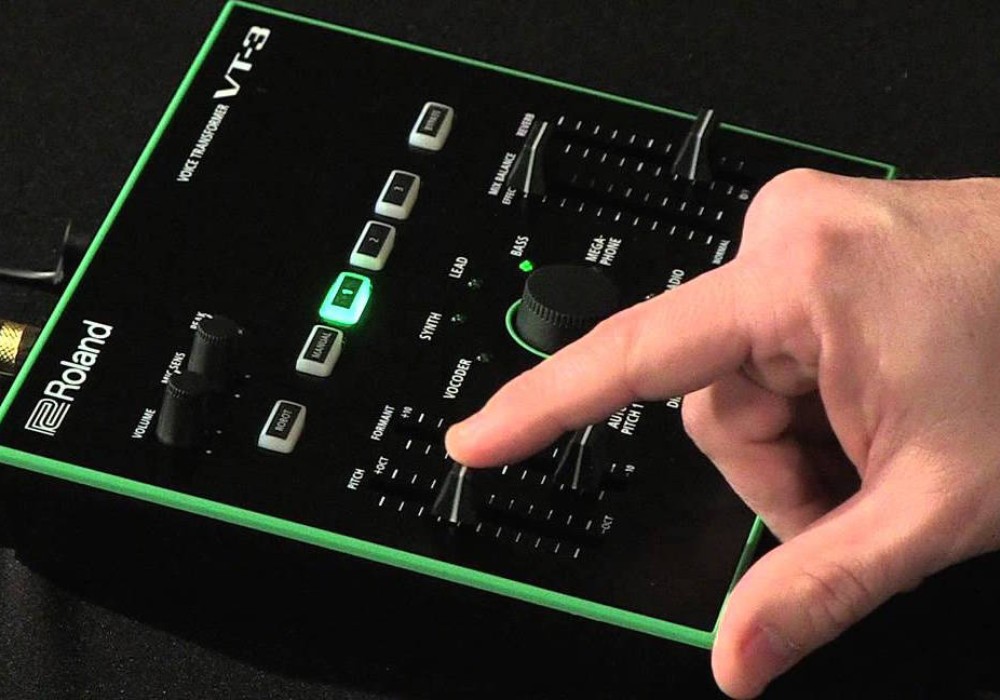From an equipment point of view, we live in a wonderful time to make music. Although there is an ongoing "vintage gear" craze, we now also have an amazing array of choices in new equipment-really remarkable and great sounding equipment. We almost have too many choices due to the growing number of boutique manufacturers. When considering a new purchase, it's difficult to sift through the endless array of manufacturers and approaches to circuitry type to arrive at a decision. For instance, if I'm wandering the floor of the AES show, and I see one of the 200 new preamps on display, I need to mentally categorize the circuit type of a unit I'm looking at so I can decide if it's something I even want to learn more about. Is it tube, discreet transistor, or IC-based? Is it electronically-balanced, transformer-balanced, or single-ended? Now obviously, you always need to listen to the device for a real evaluation, but starting with an understanding of its approach to circuitry helps as a rough starting point. So let me categorize the Edax VTP-100 mic preamp. It is a single channel preamp with two tube gain stages and transformerless balanced inputs and outputs. This puts it in the "not quite as common" category, as many tube preamps use transformers to balance the inputs and outputs.
First, the physical layout. The unit is a 2RU-height, half-width design, with a rack adapter available for a stereo pair. This is not a bare bones front panel; there are tons of features and controls. The first thing you notice is a huge, round VU meter that would make any mad scientist proud. In addition, there is a red overload LED for the input level. There is a stepped gain control in 4 dB steps. There is a continuously-variable output gain knob, and there's a stepped high-pass filter knob with eleven frequency points from 20 Hz up to 250 Hz. It has the usual switches for phantom power, unit power, and polarity. Then there's a knob that selects the function of the gloriously imposing VU meter from input gain to output gain, as well as a separate peak-hold switch. There's even a headphone jack in the back with an independent level control. The Edax also has the unusual feature of including a Re-Amp output with separate gain trim for sending guitar signals back into a guitar amp at the correct level and impedance. Cool!
Just to be clear-this is not a low plate-voltage "stick a tube in there" preamp. It is a real high-voltage true tube-gain-stage Class A preamp, using the tubes as parallel triodes. The tubes used are an ECC82 and a 12AU7, providing 60 dB of gain. The input impedance is a fixed 2200 Ohms for the mic input and 1M Ohm for the instrument input. The maximum output is rated at +32 dBu! There are no FET or CMOS components used in the design, and switching is accomplished with sealed relays. And again, no input or output transformers are used; the circuits are electronically balanced. The knobs are aluminum, and the chassis is extremely well-built. Every control feels solid and well made.
When picking a mic preamp, some people seem to want a high degree of character or coloration, while others are after as neutral a sound as possible. The Edax seems to offer a different category-both, at the same time. What I mean is, it really seems to have found characteristics of "clean" and "character". In general, it doesn't have the sonic footprint of a creamy tube preamp with tons of iron on the inputs and outputs. Nor does it simply provide "gain with no coloration". It definitely has a bit of the "tube thing" going on. Now, forgive the cliche, but it does have an
element of "warmth". But it also possesses real clarity and transient response. I have come to understand that, many times, transformers can be the major contributor to coloration more than tubes are-and this unit supports that thought. I think the lack of transformers provides a sonic signature that isn't too heavy-handed.
I was tracking bass with my usual preamp, a UA 2-610. Now, I really love the 2-610 and have used it on many sessions. As I was getting levels on the bass guitar, I decided to switch over to the Edax for comparison. I was... shocked. In this application, the Edax was amazingly superior. It had the depth, but also added a level of definition that just wasn't there with the 2-610. Again, I love the 2-610 and will continue to use it on many sources, but it didn't win the shootout in that particular application.
On vocals, the Edax offered no surprises. It again seemed very balanced and somewhat neutral. The headroom seemed great. I never worried that a spike in the vocal would clip the input. It seemed easy to dial in the right amount of gain on the input and output. In trying to get a feel for the limits of the Edax, I intentionally pushed it into clipping to see what it would do. Some preamps transition into clipping in a sudden and ugly way, but the Edax was a bit more subtle. This is good, but it does mean that you have to really watch your levels, because it's not always as easy to tell when you're barely touching the edge of clipping without soloing the track. Once you're aware of it, it's easy to listen for.
I did find that the 2-610 on vocals did offer a little more color and seemed to have a little more extra harmonic stuff happening on top. Again, running the risk of tired cliches, the 2-610 sounded more "tube-ish". I know that isn't scientific, but that's how I perceived it. The VTP-100 in comparison was a bit more neutral, while not being boring or lifeless.
As I mentioned before, the Edax has a re-amp feature. This allows you to run a previously recorded track, such as guitar, back through a guitar amp for re-mic'ing. I often record a separate track of the guitar through a DI for just this purpose. The re-amp circuit's output has the correct level and impedance so that a guitar amplifier reacts as it would with a guitar plugged in directly. Without this, the gain staging and frequency response would not be correct. Since a re-amp box is about $250 or so, this is a nice thing to have included.
One odd thing is the metering. There is a four-way switch that selects between input VU, input PPM (peak metering), output VU, and output PPM. That's great, but both input options are calibrated to read line-level at the XLR connector. This is great if you're using the box as a re-amp and are feeding it line-level, but it means that input metering is useless when using as a mic preamp. The meter barely moves. Sure, I use my ears to set input gains on a mic preamp, but it sure helps to have a meter to let me know if I'm approaching the danger zone. Now, I've got many preamps that have no metering, but this one has a huge analog VU that glows ominous orange. Why have it be useful only in re-amp mode? I therefore found myself setting the meter on Output VU mode most of the time, with the input gain at about "noon". That at least gave me some idea of the gain staging. Also included is a Peak Hold mode, which is a novel idea for an analog VU meter.
That minor issue aside, the Edax VTP-100 is a great unit. It is very well-built, has tons of features, great headroom, and consistently delivers a good-sounding result. I used it on vocals, piano, bass, acoustic guitar, and electric guitar. No matter what the source, it sounded great. As I have said, there are preamps with more "mojo", and there are preamps that are cleaner. This seems to be squarely in the middle. It
provides wonderful detail while adding a bit of a tube vibe. It's a great choice for someone who wants a bit more than just colorless gain, but doesn't want to commit each track to substantial character from the preamp. I think it is wonderful to have this sort of option in terms of sonic color. Not many preamps fill this particular role. In a world of tubes being overused as an effect, it's nice to see a device that just uses them really effectively for gain, not just over-coloring the source. ($960 MSRP; www.edaxaudio.com)
Tape Op is a bi-monthly magazine devoted to the art of record making.





_disp_horizontal_bw.jpg)